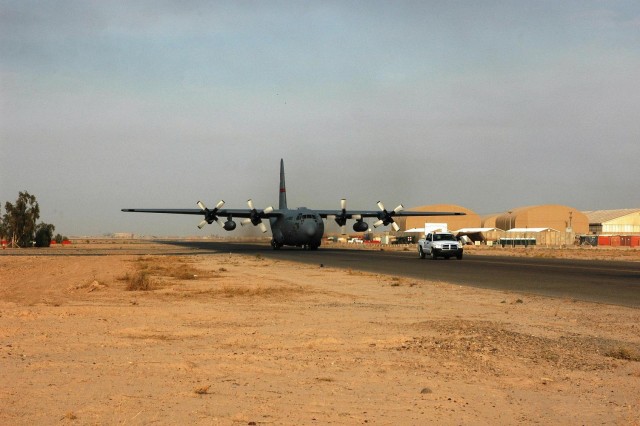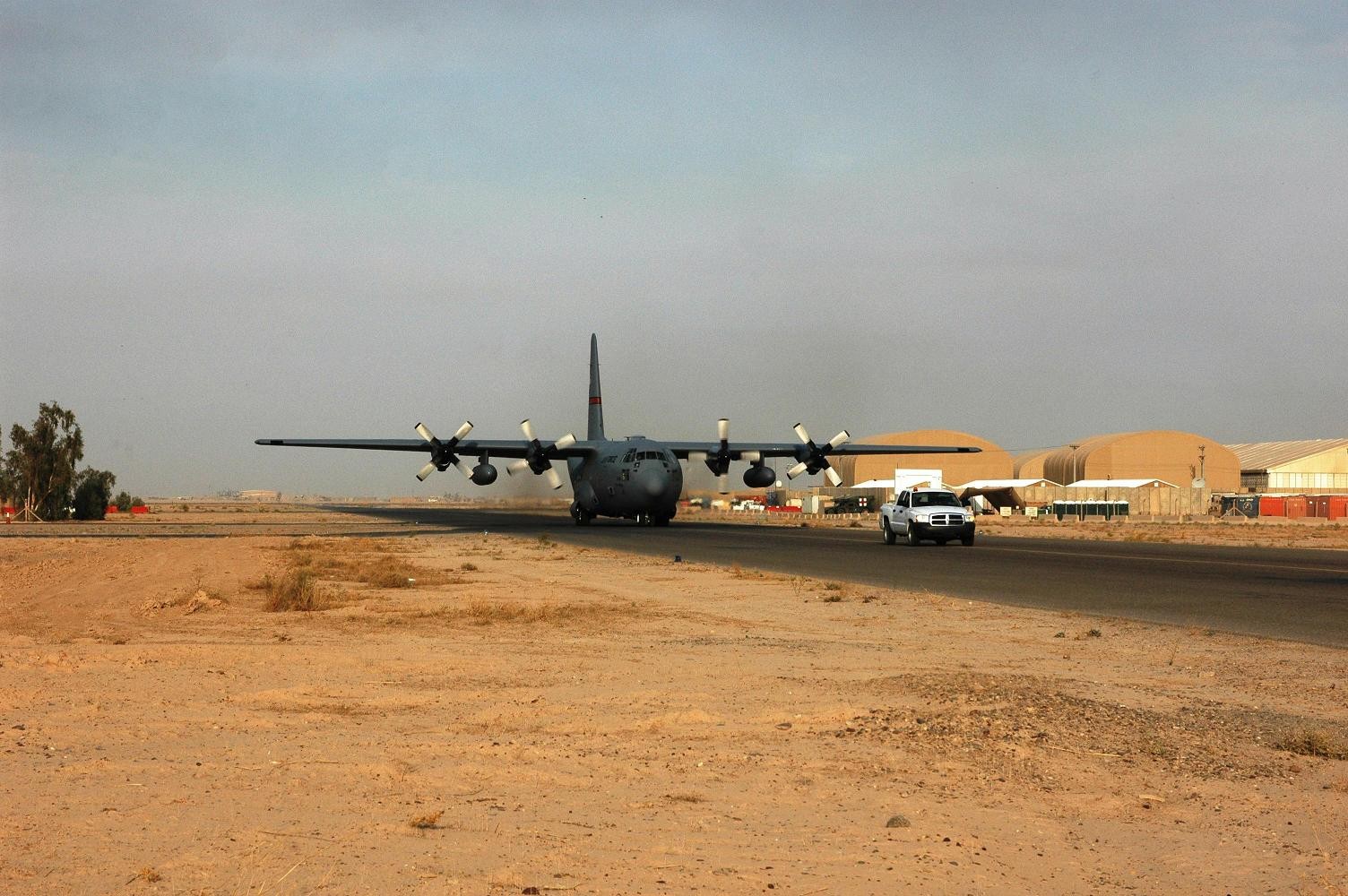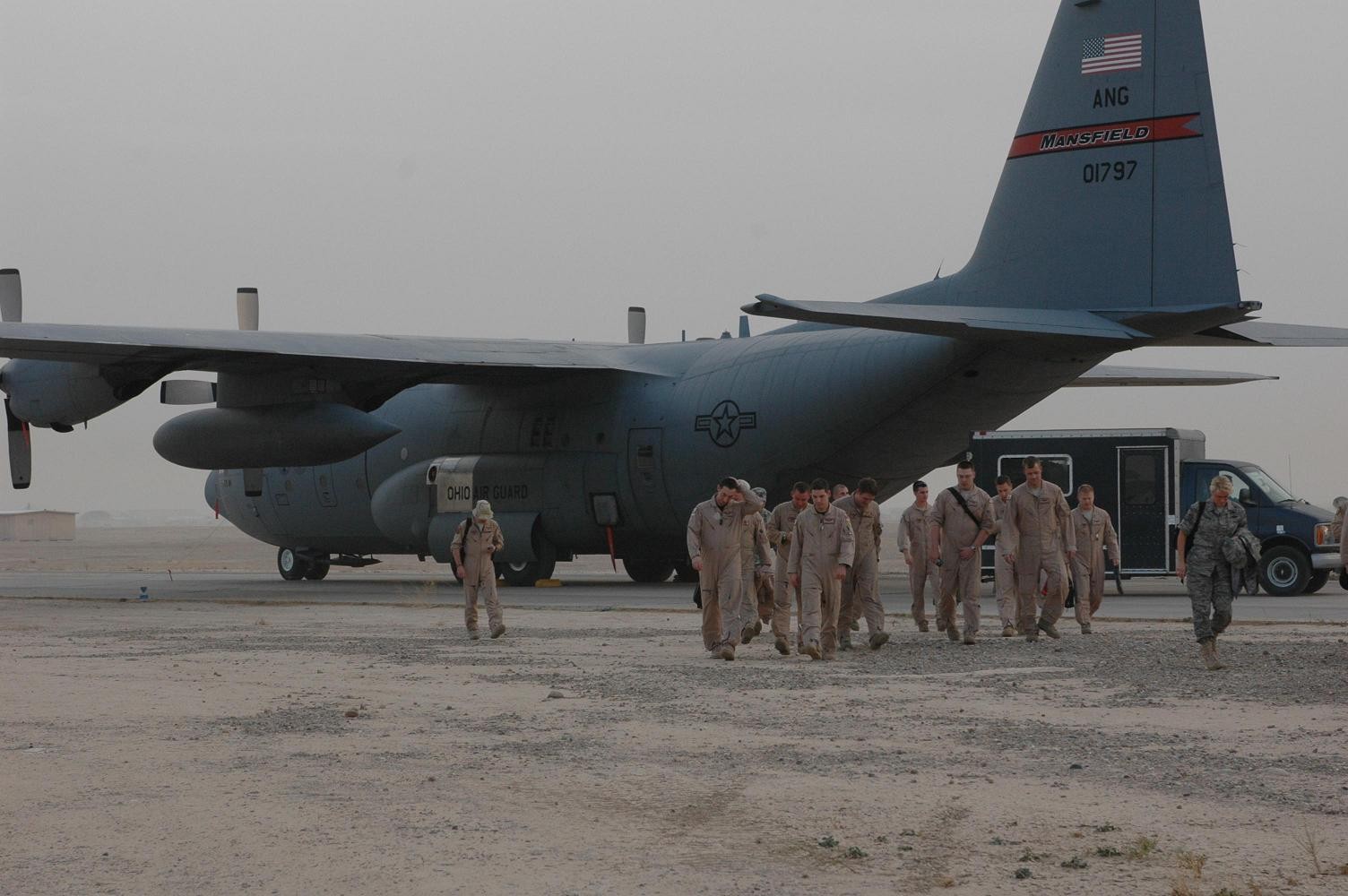CONTINGENCY OPERATING BASE SPEICHER, Iraq - The 164th Expeditionary Airlift Squadron recently joined the Task Force Wings team at Contingency Operating Base Speicher, near Tikrit, Iraq, Oct. 22 and brought with them two C-130H Cargo airplanes to add to the TF Wings fleet of nearly 200 aircraft.
The 164th EAS, based in Mansfield, Ohio, as part of the 179th Airlift Wing, is assigned under tactical control to TF Wings. The addition of the squadron brings the capabilities of the C-130H "Hercules" aircraft, also known as C-130H2 or simply "Hercs," as part of an effort to assess the nuances of integrating an Air Force squadron into Army aviation operations.
The assessment has become necessary due to the fielding of the C-27J "Spartan," the Joint Cargo Aircraft (JCA), to the Air Force. This fielding will gauge the effectiveness of the joint Concept of Employment for future operations where the JCA would provide direct support to Army units.
"Primarily, this is a [Concept of Employment] to watch, and document, how an Air Force squadron integrates with Army command and control and scheduling processes," said Air Force Col. Gary McCue, G-3 Air C-130 liaison officer. "We have 'broken the ice' on a very new and bold concept. Someone has to take the first step and it has come about that it is the 25th [Combat Aviation Brigade] and 164th EAS."
According to Col. McCue, the airlift squadron will allow greater flexibility for TF Wings.
"[It allows us to] haul more cargo and personnel," he said. "We will relieve the stress on the general support helos, namely the UH-60s and CH-47s. In most instances, we can execute direct support, plus time-sensitive, critical missions with more robust and quicker delivery. We maintain all the capabilities for a typical non-special ops unit."
Army Lt. Col. Thomas Lewis, deputy commander, TF Wings, agreed and also explained what the task force would gain from the assessment.
"The C-130s can execute direct support mission requirements over extended flight routes in a shorter period of time. Through a joint relationship, [we will] enhance the responsiveness and effectiveness of our support to the MND-North commander. The 164th EAS C-130s enables the 25th CAB with more capability to provide effective support with CH-47s and UH-60s by getting out to some of the FOBs within MND-N more frequently and providing an enhanced level of support to the BCTs."
This unique joint employment has not been conducted since the Vietnam War. The 164th commander provided some background.
"This [assessment] begins the study of how to employ U.S. Air Force airlift aircraft within a [U.S. Army combat aviation brigade]," said Col. McCue. "This has not been done since Vietnam. And, in Vietnam, it was only done for the purpose of transferring C-7 Carribous to the U.S. Air Force from the Army. This [CONEMP] will confirm the concept of having Air Force units [tactically controlled by Army units] while deployed."
The results of this joint concept of employment by the Air Force and Army will shape the future as both services look ahead toward providing time sensitive and mission critical support to our Nation's war fighters.
"The key to success is true integration between Army and Air Force Units. If only for a short period of time, the 164th EAS is part of our team here in Task Force Wings. Together our job during this proof of concept is to define the effective employment as it applies to the direct support command relationship," said Lt. Col. Lewis. "The 3rd Infantry Division staff, 25th CAB staff and 164th EAS are working to develop and further refine the necessary [TTPs] to provide a capability that is responsive and agile enough to stay relevant within the operating environment of MND-N, Iraq. It is important for us to get it right and provide the MND-North commander and his subordinate units a high degree of confidence in the future of Direct Support provided by the JCA."
A challenge facing this CONEMP is the ability to quickly overcome the slight nuances that differentiate Army and Air Force culture. What is the most important factor to successfully integrate the C-130H2s which will eventually transition to the employment of C-27J Spartans'
"Attitude," said Col. McCue. "We, along with the other [Air National Guard] and Active Component folks want this to be successful. Likewise, the CAB has exhibited this mentality. We are here to learn and teach. ... It is our future."






Social Sharing